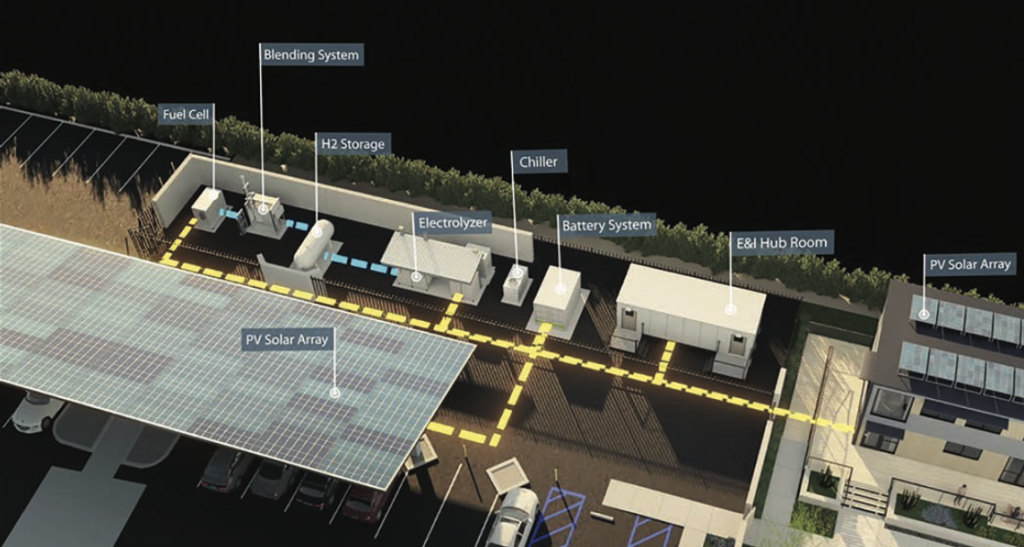
Emerson Technologies help SoCalGas deliver clean energy
Monica Ferguson
Cleantech Canada Energy digital technologies hydrogen microgrid project resiliency and reliability Sempra Energy solar energy Southern California Gas white paper
Photo: Emerson and SoCalGas.
Emerson announces the availability of a White Paper describing how they assisted Southern California Gas (SoCalGas) with a hydrogen microgrid project.
SoCalGas, a regulated subsidiary of Sempra Energy, is working with Emerson to deploy digital technologies, software, and services to demonstrate the resiliency and reliability of a hydrogen microgrid for southern California utility consumers.
The Innovation Experience shows how the carbon-free gas made using renewable electricity can be consumed in pure form or blended with natural gas to fuel clean energy systems of the future.
SoCalGas commissioned the project to provide a working example of what tomorrow’s residential energy system could look like. The nearly 2,000 square-foot home is outfitted with solar panels, a power storage battery bank, an electrolyzer to convert solar energy to renewable hydrogen, and a fuel cell to supply electricity. Hydrogen, produced at the site, can also be blended with utility-provided natural gas, and used in the home’s heat pump HVAC unit, water heater, clothes dryer, and stove.
The control system balances energy supply and demand within the home, and the system contributes energy to the local grid when possible, either as electrical power or by blending hydrogen into the natural gas distribution system, all with zero-carbon emissions.
“Balancing energy consumption optimally with existing sources requires sophisticated control and precise measurement,” said Brian Burkowsky, hydrogen strategy specialist, Emerson. “We have provided automation solutions and expertise on a wide variety of hydrogen projects globally, often working with our Impact Partners near the sites, as we did with SoCalGas and Caltrol on this project. The potential for hydrogen to make power distribution more sustainable is enormous, and we are eager to show how the utility industry, and individual consumers, could benefit from it as a practical means of change.”
